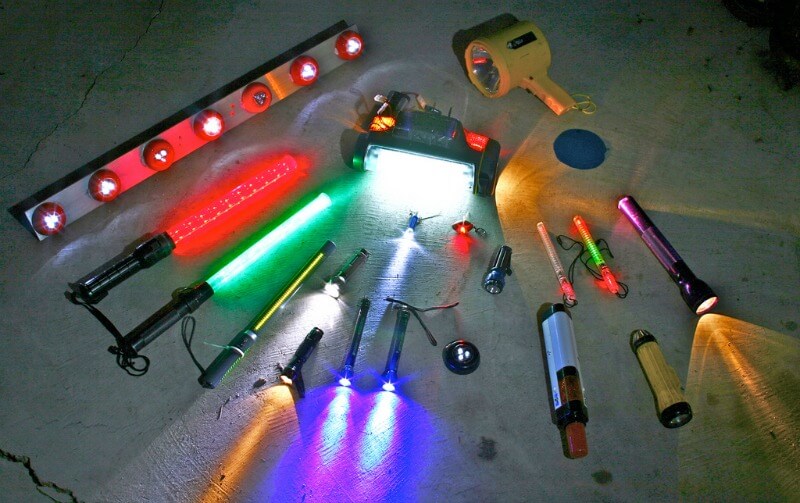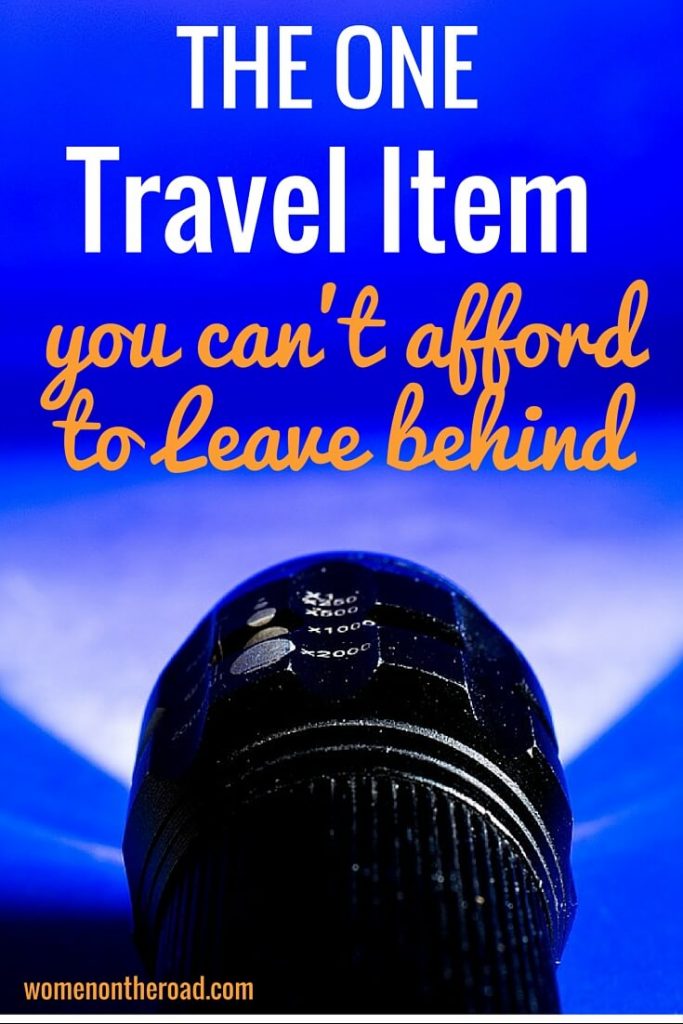How do you choose the best flashlight for your trip?
NOT by grabbing a cheap impulse supermarket buy or magazine subscription freebie, that’s for sure.
And why should you splurge on a snazzy head flashlight or one of those newfangled mini-flashlights? Because the right piece of equipment could save your life.

I usually carry two flashlights when I travel.
One is a small(ish) Fenix LD12 that I place in my shoe before going to bed. If there’s a fire, I’ll instinctively grab my shoes and won’t have to scrabble around for a flashlight. I also carry this around in my bag or daypack in case I face a power failure in a mall (it happened in Manila) or spend too much time photographing a glorious sunset and have to walk back 2km at night along a snake-infested forest path (Sabah).
My other flashlight is a head torch or head-mounted light. If you’ve ever tried to find your keys in the dark or use the toilet paper in an outhouse by sticking your flashlight in your mouth to keep your hands free, you’ll immediately understand why I have this.
This is the ideal wish list item or birthday present request. You’ll be reminded of the person who gave it to you each time you use it – it will be a little bit of home to carry with you.
Once upon a time, flashlights were incandescent, with little bulbs that burned out after a few weeks or broke easily. You probably even have a few of these lying around. These days, the best flashlight is an LED. It’s lighter, more compact, your battery lasts longer and the LED bulb itself typically lasts 50,000 hours. If you use it every day for five hours – that’s an awful lot of night reading – it should last about 10,000 days, or 27 years!
So how do you choose the best flashlight for you when there are thousands out there?
You ask yourself – and others – a few questions.
Are you heading for the city or the wilderness – or someplace in-between?
If you’re away from civilization for any length of time, you need to have either plenty of disposable batteries or a reliable solar charger for rechargeable batteries. Both of these take up room and add to your weight. If you’re near electricity, you can go the rechargeable route; just make sure your charger works in different countries and has the right slots for all batteries you will be using on your travels.
TIP: Try to run all your gear on the same battery size if you can – or on a maximum of two sizes. You can then raid another item’s batteries in an emergency. Store new flashlight batteries away from metal in waterproof containers. If they’re loose and touch each other, they may get discharged, leak in your pack or start a fire!
Is it waterproof?
You don’t need a diving flashlight (unless you’re diving, of course) but if your flashlight gets wet it may fail when you need it most. To be sure you really have a waterproof flashlight always buy a reliable brand – don’t just believe the writing on the box and check reviews and popularity. Some are poor copies made in cheap labor countries and may not have been sealed properly.
How many and what style?
I love the convenience of a good head light, for everything from late-night reading to bathroom trips in strange places. Imagine NOT having a headtorch if you have to go in the middle of the night! So that’s my first choice and I usually use a headband designed specially to hold my Fenix. Often I also carry a small photon flashlight (not waterproof so be careful) I wear around my neck (not to mention it comes in cute flashlight colors).
What power output and what size?
I like a good beam when I need it but I’m demanding – I also want a low setting I can use for hours and which I know will last if I’m in a tight spot. In my opinion, the best flashlight for travel is the lightest possible one. On the other hand, if you want to use it like a baseball bat just ignore everything I just mentioned. Still, you’ll pay a penalty in weight if you go this route. It’s like deciding whether to take a point-and-shoot camera or big bulky photo gear.
How reliable is it and how much should you pay?
Make sure your flashlight can’t accidentally turn itself on. If it does, even the best flashlight will run out of juice. This by the way is another good reason to carry not one but two – one can always serve as an emergency flashlight!
There are many good brands out there and I’ve tested quite a few of them.
In terms of value for money, I prefer Fenix flashlights. (Use these Amazon.com links to research or buy their little LD12 or the larger LD22, both of which fit into the Fenix flashlight headband).
Specs: The LD12 takes one AA battery (easy to find); it has four intensities, an SOS mode and a strobe (which you can use to disorient an attacker). At its lowest setting, it will run for 97 hours.
The larger LD22 takes two AA batteries, is nearly twice as bright as the LD12, and will run for 110 hours on its lowest setting. Both are waterproof.
You might also have a look at the tiny photon flashlights for your keyring or jacket or backpack zipper and if you’re staying in the city, the stylish E01 should do the trick (but don’t try to put this slim item in your headband or it will fall out!)
Whatever you decide, please don’t skimp here and do choose the best you can afford. It’s one of those bits of kit you’ll be very glad to have. In a pinch, the combination of blinding light and the scalloped metal hood at one end could be dissuasive in case of an attack.
Once you’re home – well, who doesn’t find uses for extra flashlights?
— Originally published on 28 February 2012
PIN THIS PICTURE AND SAVE FOR LATER!

